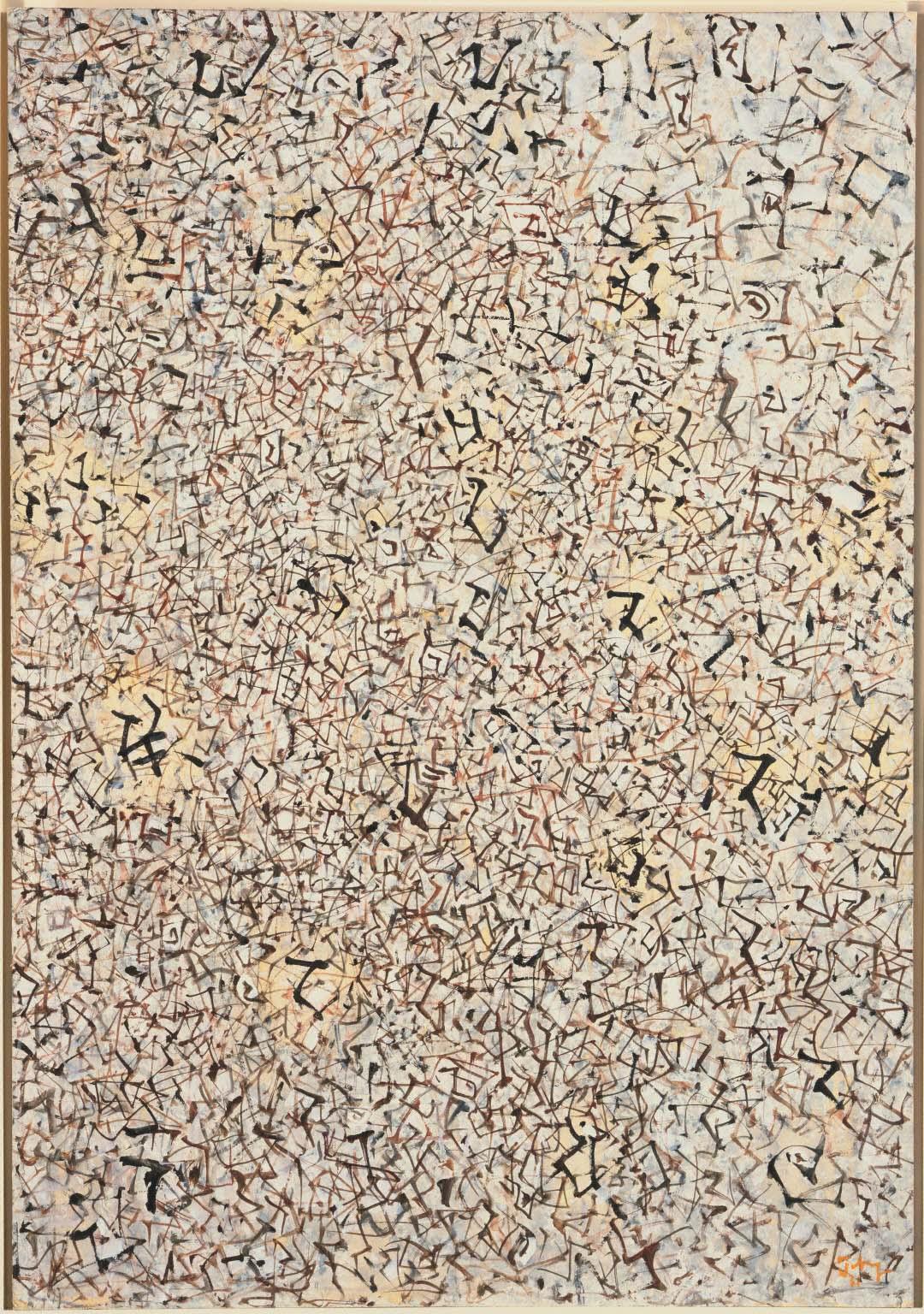After the Imprint
Mark Tobey ( 1961 )

Tobey stands out in the history of American abstract expressionism. His paintings reveal influences and techniques that differ significantly from those of his contemporaries, such as Adolf Gottlieb, Jackson Pollock, and Mark Rothko. In contrast to the self-involvement and personal angst of this latter group, Tobey depicted universal themes conveying hope for world unity.
Furthermore, rather than arising from his intuition, Tobey’s works—painted in a delicate, linear style—were often inspired by contemplation of visible reality. Tobey’s separateness might be explained partially by his choice of living away from New York for most of his career, but it could also be justified by his lifelong immersion in the Bahai faith and Oriental aesthetics.
While his early works still contained recognizable motifs, forms and figures superimposed with energetic strokes of light color upon a dark ground, Tobey’s mature works fail to offer identifiable shapes and embrace wholeheartedly his signature calligraphic style as they are filled with angular and dissonant lines. After the Imprint, painted in 1961, was painted when Tobey was an internationally acclaimed abstract artist. In this large work, he demonstrates his mature style: energetic, enmeshed strokes of white, black, and earth tones form a dense network upon a background of muted ocher. Due to the all-over screen of interlocked brushstrokes, the painting seems to represent a minute section of the boundless cosmos, the lines visually conveying its unseen energies. The pattern is most concentrated in the lower right quadrant, a reflection of Tobey’s tendency to create an area toward which the composition gravitates. However, the artist rejected any intension of creating a focal point in his works as he sought to achieve a unified structure. Despite the apparent non-objectivity and formal emphasis of After the Imprint, Tobey never created a painting that was not inspired by the sights and sounds of the exterior world.